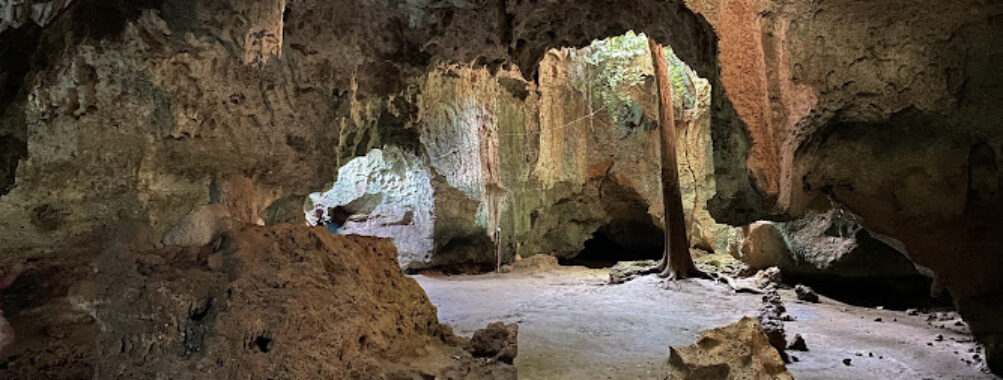
Shimoni Slave Caves
Table of Contents
Description
The Shimoni Slave Caves represent one of Kenya’s most haunting historical sites – a sobering reminder of the East African slave trade’s dark legacy. These limestone caves, which stretch deep beneath the coastal village of Shimoni, once held countless enslaved individuals before their forced journey across the Indian Ocean. I’ll never forget my first visit here – the cool, damp air and echoing chambers created an atmosphere that made the weight of history feel incredibly present.
These natural caves, later modified for human captivity, tell stories that’ll make your heart ache. Local guides share detailed accounts passed down through generations about how traders used these caves as holding cells during the 18th and 19th centuries. The narrow passages still bear witness to this painful past – you can see iron rings embedded in the walls where chains once held people captive.
Walking through these caves today offers profound insights into a crucial piece of African history that often goes untold. The cave system spans roughly 5 kilometers, though only a portion is accessible to visitors. The main chamber’s high ceiling and naturally formed alcoves create an eerie acoustical effect that somehow makes the space feel even more solemn.
Key Features
• Ancient limestone cave network with historical significance dating back centuries
• Original iron rings and markings from the slave trade era still visible on cave walls
• Educational exhibits displaying artifacts and historical documentation
• Professional local guides who share oral histories and cultural context
• Multiple chambers and passages showcasing different aspects of the caves’ history
• Natural formations including stalactites and marine fossils
• Beautiful coastal location with views of the Indian Ocean
• Adjacent marine sanctuary offering additional activities
• Memorial area honoring those who suffered during the slave trade
• Small museum with historical artifacts and educational materials
Best Time to Visit
I’d say the ideal time to explore these caves is during the dry season, between December and March. The caves can get pretty slippery during rainy periods, and trust me – you don’t want to navigate those ancient steps when they’re wet! Early mornings tend to be less crowded, and the temperatures are more comfortable for exploring the cave system.
The caves maintain a relatively constant temperature year-round, but the humidity can be intense during the wet seasons (April-June and October-November). If you’re anything like me and prefer avoiding crowds, try planning your visit for weekdays rather than weekends. The morning light also creates interesting shadows in the cave entrances, making it a photographer’s dream.
How to Get There
Getting to Shimoni Caves isn’t exactly a walk in the park, but that’s part of what makes it special. From Mombasa, you can catch a matatu (local minibus) heading south – though I’d recommend hiring a private car or joining a tour if you’re not used to local transport. The journey takes about 2-3 hours, depending on traffic and road conditions.
If you’re coming from Diani Beach, it’s a shorter trip – about an hour’s drive. The road gets a bit bumpy near the end, but the coastal scenery along the way makes up for it. You’ll want to keep your eyes peeled for the signs pointing to the caves once you reach Shimoni village – they’re not always obvious, but locals are usually happy to point you in the right direction.
Tips for Visiting
Look, I learned some of these the hard way, so let me save you some trouble! First off, wear sturdy shoes – those limestone surfaces can be treacherous in flip-flops. Bring a small flashlight or make sure your phone’s fully charged for its flashlight feature – the cave lighting isn’t always reliable.
You’ll definitely want to book a guide – they’re not just helpful, they’re essential for understanding the site’s significance and navigating safely. The stories they share breathe life into these stone walls. And please, respect the site’s solemnity – this isn’t your typical tourist attraction.
Carry water (it gets humid), but avoid bringing large bags – some passages are narrow. Consider visiting early in your day to avoid the afternoon heat. Oh, and don’t forget your camera, but be mindful that flash photography might be restricted in certain areas.
If you’re claustrophobic, some sections might feel challenging – but there are always alternative viewing points. The guides are great at accommodating different comfort levels. And hey, while you’re there, consider combining your visit with a trip to the nearby marine park – it’s a nice way to process everything you’ve learned while enjoying some natural beauty.
Remember to carry cash for entrance fees and guide tips. And one last thing I learned the hard way – bring mosquito repellent! Those little buggers love hanging out near the cave entrances, especially during dawn and dusk hours.
Location
Places to Stay Near Shimoni Slave Caves
Find and Book a Tour
Explore More Travel Guides
No reviews found! Be the first to review!